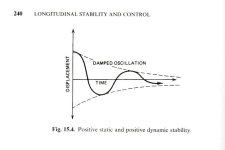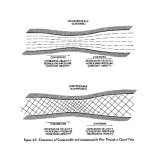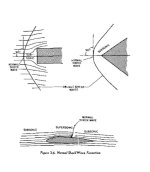It's not my fault you do not understand it and refuse to listen.
I'm definitely listening--which is probably a mistake. And I'm not quoting sources that contradict me nor am I ignoring the sources provided by others which suggests that maybe I'm not the one who's not understanding.
...small, cyclical, and transient oscillation has EVERYTHING to do with conservation of energy.
Nonsense.
When a damped system is perturbed, it will experience cyclic and transient oscillation. Depending on the perturbation, the object may also be displaced or reoriented when the oscillation damps out. By the way, the graph you posted earlier (Post #401) actually shows a displacement after the oscillation damps out. Go back and look at it carefully and you will see what I'm saying. Where was the bullet at the start of the graph on the displacement axis? Where did it end up on the displacement axis after the oscillations stopped? This is the kind of thing I'm talking about. You post correct information, but then you don't seem to actually comprehend its content.
And none of that has anything to do with conservation of energy. Nothing in what I said could reasonably be interpreted to indicate that the oscillations go on forever, only that when they do die out, if the perturbation force was applied significantly asymmetrically, the bullet may be displaced from or misaligned with the original trajectory.
If any gases at muzzle exit influence the flight of the bullet those gases would only be able input a finite amount of energy.
Of course. Nothing in my statements could reasonably be interpreted to imply that infinite energy is required. For one thing, there's a lot of energy available. Anyone who has fired a gun knows how much energy is released after the bullet exits the muzzle. More specifically, that energy results in a perturbation of the bullet as it exits the muzzle, and,
if the energy results in a force applied asymmetrically to the bullet (as occurs with a damaged crown), it also results in the ultimate displacement/reorientation of the bullet. The spin will stabilize it after small, cyclical and transient oscillations die out, either way, but if the initial perturbing force was asymmetrical enough, the bullet won't be aligned exactly the way it was. That's why the crown of the muzzle is so important to accuracy.
Small = of minor importance, moment, weight, or consequence:
Cyclical = process is one in which a series of events happens again and again in the same order.
transient = Decaying with time, especially as a simple exponential function of time.
You keep repeating this as if it's some kind of mantra. I understand all of those things perfectly. What you keep missing is that there is nothing in any of that that says the initial perturbation can't ultimately leave the bullet misaligned/displaced after all of the small, cyclical, transient motion stops.
Ok, Let's try this a different way. Explain the mechanism by which a damaged crown negatively affects accuracy.
...My degree is in this and I graduated Magna Cum Laude from Embry Riddle.
I'm not calling your qualifications into question, the problem is you sometimes say things that don't make sense (like claiming displacement/misalignment violates the conservation of energy), you sometimes quote sources that contradict your own claims (like posting a graph that shows the displacement you claim can't exist) and you sometimes post source material that isn't relevant to the specific claims you make. Furthermore, when it is shown that your claims are incorrect--sometimes using your own source material, you won't back down or reassess. You just ignore the contradiction and proceed as if nothing changed. Whatever your degree is, and however well you did in school, the content of your posts shows that you clearly don't understand at least some of material you are speaking on authoritatively--what else could explain your bringing up sources that obviously and directly contradict your own claims?
A case in point is that you have still chosen to completely ignore the source I provided which directly contradicts your claim about gas speed exit.
Certainly the gas can have supersonic speed, easily up to 5k fps, although very briefly.
For the purposes of calculating momentum, the exit speed is what matters.




